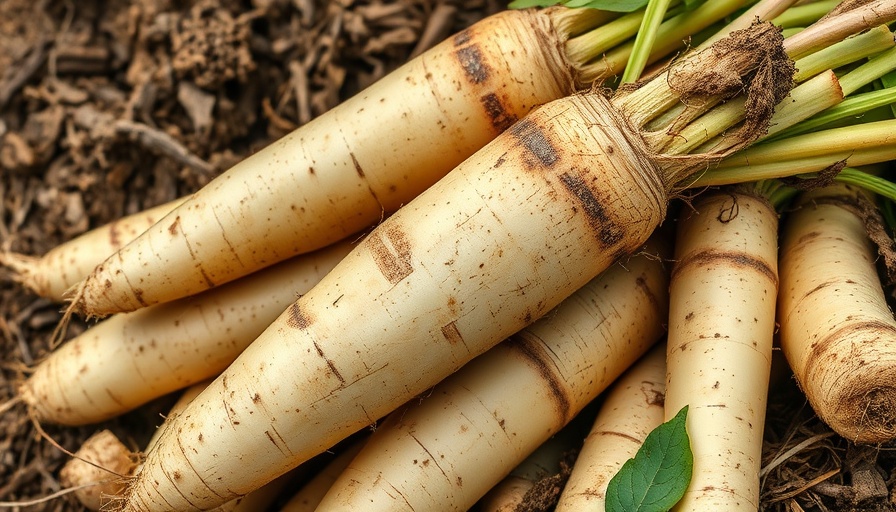
The Essential Guide to Harvesting Horseradish for Flavors and Health
Horseradish, known for its zesty bite and numerous health benefits, is a must-have for many home cooks and health enthusiasts alike. Whether you relish it as a condiment or acknowledge its properties as an antioxidant and anti-inflammatory agent, understanding how to correctly harvest this root vegetable is crucial for enhancing both flavor and health outcomes.
When Is the Best Time to Harvest Horseradish?
Harvesting horseradish at the right time is essential to ensure optimal growth and flavor. According to experts, the best period to harvest is typically after the first hard frost of the season but before the ground becomes completely frozen. This timing allows the plant to maximize root growth, packing essential starch and sugars stimulated by cooler temperatures.
As Carol Waters, an educator in commercial fruit and vegetable production at the University of Nebraska-Lincoln, notes, the roots should ideally be harvested annually. This means letting the plant grow for about a year helps ensure size and flavor potency. Harvesting too early can yield roots that lack the desired heat and flavor, making it essential to wait until the ideal moment.
Expert Tips for Successfully Harvesting Horseradish
Harvesting horseradish is somewhat different than collecting other vegetables since it grows from a portion of its main root, not seeds. This unique growth pattern means several techniques can be employed, from manual digging for small-scale home gardens to mechanical harvesting for larger producers. The most effective method remains manual harvesting, typically utilizing a garden fork.
To maximize the yield, loosen the soil around the roots before attempting to lift them. Experts suggest digging about a foot away from the plant's base to reduce the risk of breaking the root. After extraction, trim the offshoot roots, but make sure to save pieces measuring eight inches or longer for planting in the next season.
Proper Storage of Your Horseradish Harvest
Once harvested, the horseradish requires careful handling for storage to maintain its flavor and integrity. If you plan on consuming it soon, it should be washed and placed in a sealed plastic bag before refrigerating. For longer durations, horseradish can be stored in a root cellar with sand or in a plastic bag containing moist sand in the refrigerator. This method retains moisture and prevents spoilage.
Common Pitfalls to Avoid When Harvesting Horseradish
While harvesting horseradish can be straightforward, several common mistakes can hinder your efforts. Here are a few pitfalls to avoid:
- Harvesting Too Early: Waiting until after the hard frost ensures the roots are the best size and flavor.
- Neglecting Soil Preparation: Failing to loosen the soil may result in fractured roots, reducing the quantity you can use.
- Improper Storage: Not storing the horseradish correctly can lead to rapid spoilage.
A close attention to these details can ensure a successful horseradish harvest, maximizing both the culinary and health benefits.
Exploring the Benefits of Horseradish in Your Home
Beyond just its delicious taste, horseradish also boasts various characteristics beneficial to health. Its low-calorie content, combined with its reputation as an anti-inflammatory agent and a resource of antioxidants, makes this root vegetable a great addition to your diet. Incorporating it into your meals can help improve digestion, relieve sinus congestion, and even boost the immune system.
Conclusion: Embrace Horseradish in Your Healthy Diet
Now armed with the knowledge to harvest and store horseradish successfully, you’re on your way to incorporating this flavorful root into your meals and, ultimately, your lifestyle. Being proactive in understanding the benefits and techniques surrounding horseradish can lead to healthier dining experiences, making it a delightful addition to any home.
So, why not try your hand at harvesting horseradish? Not only will you enjoy the fresh flavors and health advantages, but you'll also gain a rewarding experience in growing your own food!
 Add Row
Add Row  Add
Add 




Write A Comment